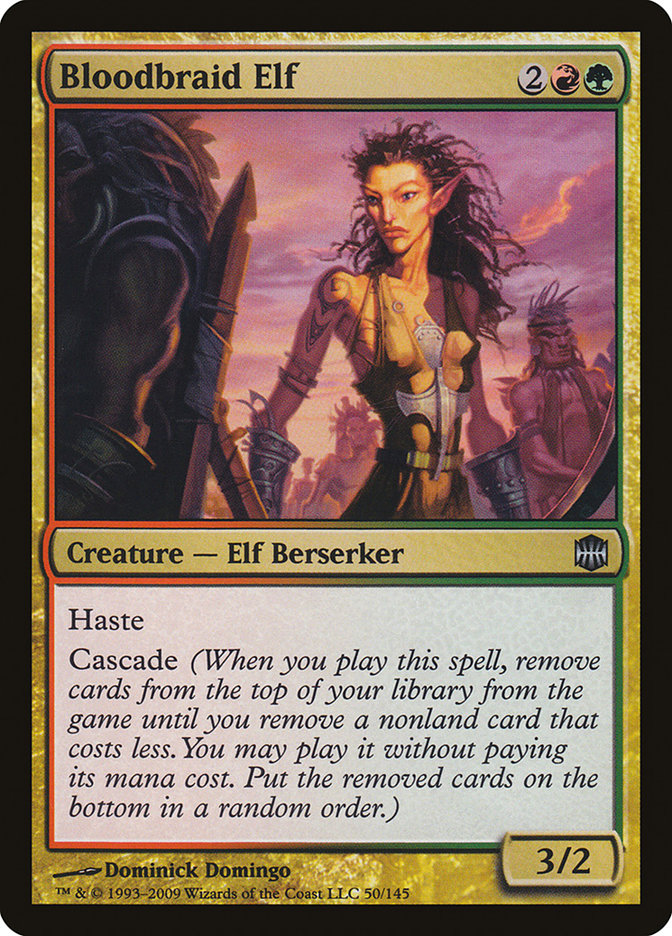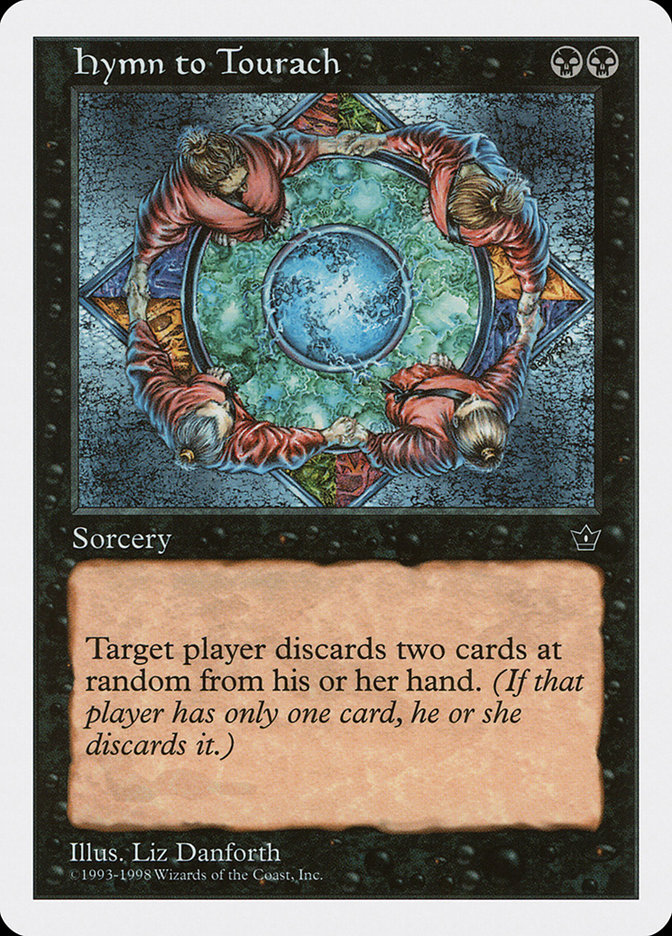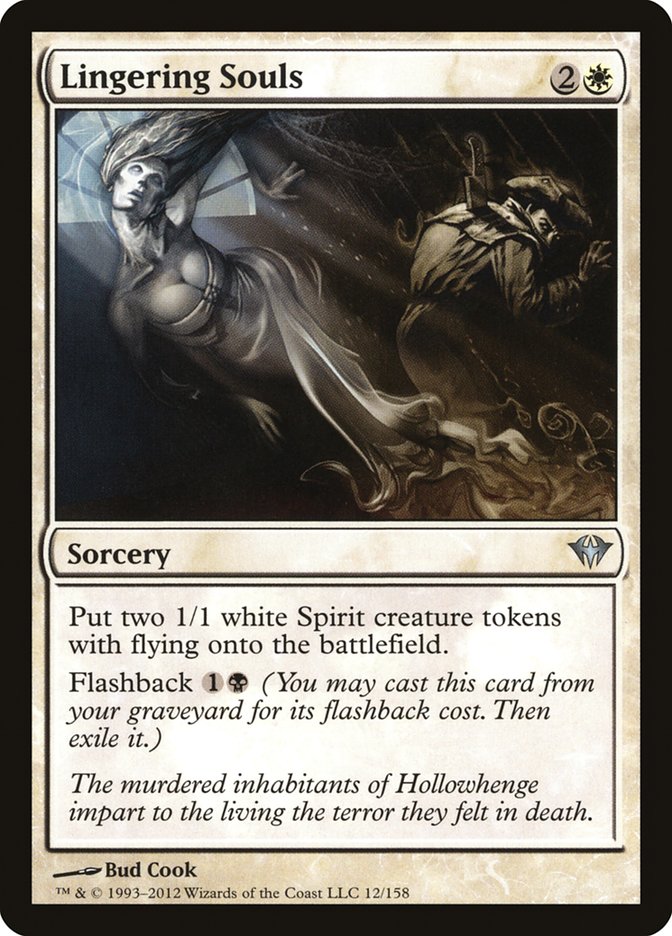*sigh*
When True-Name Nemesis was printed in Commander 2013, Legacy players were presented with a single widespread ultimatum:
“Play blue or die.”
After all, two of the few ways to interact with True-Name Nemesis are discard and countermagic, and you may as well play your own copies to beat up on anybody who resists the change. Red and green have virtually no efficient answers to our new boogeyman. In the wake of True-Name Nemesis’ release, successful strategies have mostly been limited to two camps: blue-based aggro decks and blue-based combo decks (strategies involving Life from the Loam have also made a bit of a resurgence).
Blue has always been dominant in Legacy, but now it is entirely pervasive. Joe Lossett has started to maindeck not one but two Pyroblasts in his U/W/R “Cheater Miracles” deck in the place of Swords to Plowshares (you can’t plow a True-Name Nemesis anyway). Needless to say, my beloved Dark Maverick deck does not feel like a viable strategy anymore because I can no longer interact with the blue aggro decks and Green Sun’s Zenith has never been the most efficient method of stopping combo.
Life from the Loam decks have also been doing well since Kennen Haas shocked everybody by winning an SCG Legacy Open with the powerful combo of Dark Depths and Thespian’s Stage. I was actually on an excursion with a similar Life from the Loam strategy when I bumped into this guy:
Remember me?
Here I was losing to Deathrite Shaman again. It exiled my Nether Spirit, my The Tabernacle at Pendrell Vale, and any Life from the Loams that found their way to my graveyard. It turns out that Deathrite Shaman is still a really good Magic card, serving as disruption, acceleration, and even a win condition. Only a few months ago I was rooting for Deathrite to get banned, but next to True-Name Nemesis Deathrite Shaman looks like a hero. So like an action movie sequel, I decided to team up with an old nemesis to take down the new bad guy.
Creatures (15)
Planeswalkers (4)
Lands (24)
Spells (17)

With True-Name Nemesis busy suppressing most nonblue fair strategies, I thought that Jund might still be a reasonable deck choice. Depending on the build, Jund has around seven discard spells that can prevent True-Name from ever hitting the table and four Liliana of the Veils to serve as edict effects against resolved True-Names. The Punishing Fire + Grove of the Burnwillows package is not particularly effective in the current metagame without an abundance of creature-based decks to prey upon. In fact, I’m not sure Punishing Fire was ever much better than Lightning Bolt’s efficiency and a stronger mana base.
In any case, sticking to a fetch / dual / Wasteland mana base allows for casting Hymn to Tourach and Liliana as frequently as possible, and both are crucial to the deck right now. Furthermore, Pyroblast and Ancient Grudge are nice sideboard options against True-Name Nemesis + Stoneforge Mystic decks.
I ran Jund through a few Magic Online Legacy events to get a feel for its place in the metagame. The deck certainly feels solid, but it’s not quite where I want to be. Non-graveyard combo decks still present difficult matchups, and a couple cards didn’t live up to their reputation.
Conventional knowledge tells us that Jund is an attrition deck, making one-for-one trades while getting the occasional two-for-one to get ahead. I’d argue that Legacy is no longer about attrition; it’s about the few spells that really matter in the given matchup at hand. While it always hurts to get hit by a Hymn to Tourach, Thoughtseize will often cripple a hand just as much for half the cost. As an added bonus, you get to see their hand! It’s hard to figure out how much value the information is worth, but especially in game 1 it will help you sculpt a plan for your ensuing turns.
As for Bloodbraid Elf, I found myself incredibly dependent on the cascade to hit my desired spell. Sometimes I really needed Abrupt Decay, and other times I really needed a Tarmogoyf. The 3/2 body of Bloodbraid Elf isn’t doing very much right now with no planeswalkers to attack and Batterskulls everywhere. In sideboarded games, Bloodbraid Elf was always the first to go, and I question whether it is necessary in Jund at all.
Okay, maybe playing fair in Legacy isn’t all about “card advantage” anymore, so how can we build a deck to succeed?
I took a look at Jund to see exactly why we’re playing red. I found Lightning Bolts and possibly unnecessary Bloodbraid Elfs along with a smattering of sideboard cards. Why not play white instead? Swords to Plowshares can do a reasonable Lightning Bolt impersonation, and Stoneforge Mystic provides additional threats, fulfilling Bloodbraid Elf’s role. White also offers a host of powerful anti-combo sideboard cards, shoring up a glaring weakness. Finally, Spirit of the Labyrinth looks like it’s going to have a strong impact on blue decks in Legacy, and with white we gain access to it.
Here’s the list I’m working on:
Creatures (16)
Planeswalkers (4)
Lands (23)
Spells (17)

This deck’s game plan is quite simple: cast a discard spell on turn 1 and follow it up with a two-drop once the path is clear. Where Jund has only four one-mana discard spells and eight two-drops (eleven if you count Hymn to Tourach), “Junk’d”* has eight and twelve respectively. The deck is able to execute very consistently.
While the threats this deck deploys are potent, they are very vulnerable to removal, but the idea is that the discard spells ensure the survival of your threats. An unchecked Dark Confidant leads to even more cheap discard spells, and Stoneforge Mystic and Tarmogoyf provide quick clocks. By keeping your opponent off of relevant cards and stranding conditionally useful cards like Daze, Spell Pierce, or redundant combo pieces, this deck can gain an early edge and ride it to victory.
Notice the mana curve of this deck. Only the four Liliana of the Veils and two pieces of maindeck Equipment cost three or more, a concession to the hidden mana requirements of Stoneforge Mystic and Equipment. Hymn to Tourach has been replaced by Inquisition of Kozilek, partly for concerns with regard to the mana curve and partly because I value the information gained that highly.
I’ll admit that a large part of why I wanted to play white and Stoneforge Mystic was to have another way to deal with a True-Name Nemesis that hits the table. In Jund, if Liliana of the Veil isn’t enough, True-Name is an unstoppable force. With Sword of Fire and Ice, at least we can attack through a resolved True-Name and hope to win a race. We can even find the Sword with a Stoneforge Mystic and protect it from countermagic with Stoneforge’s activated ability, making this plan somewhat reliable.
While I feel pretty happy with the overall game plan of this deck, I definitely need to hammer out more of the details. Some things on my mind include:
- What is the proper mix of removal spells?
- How many Stoneforge Mystics do I want?
- Is Spirit of the Labyrinth oppressive enough to warrant maindeck play? What would it replace?
- How does this deck fare against deck X?
The dozen or so matches I played with this deck are vastly insufficient to claim a finished product, and I will need to play many more in order to arrive at a verdict with confidence.
Some of you out there are probably wondering why Lingering Souls is absent from this list. Lingering Souls has three primary functions: to put pressure on a planeswalker, to protect a planeswalker, and to serve as a resilient (albeit slow) threat. I’m not fully confident that my omission of Lingering Souls is optimal, but planeswalkers are as scarce as they have ever been in Legacy due to True-Name Nemesis; Liliana of the Veil doesn’t benefit from protection the same way Jace, the Mind Sculptor does. Furthermore, this deck doesn’t try to blank its opponent’s removal. Instead, it tries to eliminate it with discard and then overload it with an abundance of high-priority targets.
The sideboard plan against combo is very straightforward: cast a discard spell and follow it up with a hate bear. While that seems shaky on paper, my experience has taught me that it’s not only a legitimate plan but a potent one versus many combo decks. I’m not sure what the proper mix of hate cards is, but Spirit of the Labyrinth; Phyrexian Revoker; Gaddock Teeg; Ethersworn Canonist; and Thalia, Guardian of Thraben all feel like legitimate choices. After board we get access to eight discard spells and around six pieces of combo hate, which is certainly a fair amount for our opponents to try to deal with. While they may be able to figure out a way around Gaddock Teeg or Ethersworn Canonist eventually, they need to do so before our moderately fast clock is able to finish them.
Now for the big question: is this deck actually an upgrade to Jund? Admittedly, I’ve brewed a number of Legacy decks over the course of the last year that were simply worse versions of Jund, but I think playing white over red may be an upgrade. The game plan of “Junk’d” is very consistent, and most games feel competitive. Bloodbraid Elf certainly isn’t missed, but Lightning Bolt, Pyroblast, and Ancient Grudge were all nice cards to have access to. Nature’s Claim does an okay impression of Ancient Grudge, and while sideboarded games feel slightly soft to artifacts, they feel better against enchantments.
I’d have to say the combo matchups are improved with the white splash, adding another axis of interaction by using permanent-based hate alongside hand disruption. I’d also like to think that this deck has a better matchup against fair decks now that it has access to Stoneforge Mystic and Equipment, but I’m not yet 100% sure. I’m aware that the deck is now weaker versus opposing planeswalkers without Lightning Bolt and Bloodbraid Elf, but as I mentioned before, planeswalkers are currently scarce enough for that not to be a major concern. Overall, I feel like “Junk’d” is an upgrade to Jund and its lower mana curve enables more efficient starts.
I hope you like my perspective on playing fair in Legacy, and if you have any questions, comments, or suggestions, I’d love to hear them. If you prefer playing a fair but powerful game of Magic in Legacy, I think “Junk’d” is an excellent option.
*The name “Junk’d” comes from a combination of Jund (black-red-green) and Junk (black-green-white). While this deck is Junk colors, the gameplay is much more similar to a typical Jund deck.





